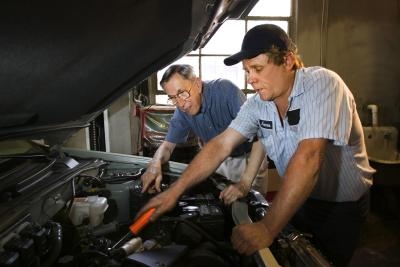
Chevrolet began producing its big block engine series in the 1950s and 1960s. These engines come in a variety of sizes, listed by displacement in cubic inches: 348, 366, 396, 402, 409, 427, 454, 502 and 572; the most common big block is the 454. This engine was used in cars until 1974, after which it was placed exclusively in Chevrolet's trucks, like the Suburban and the C10. The 454 was used in various forms at least until 1996. To ensure engine stability, engine bolts must be torqued or bolted down to certain specifications set by the manufacturer.
In the 454, the bell-housing-to-engine-block bolt connects at 30 foot-pounds of torque. The bolt connecting the crankshaft to the engine block bolts at 95 food-pounds. Bolts connecting the cylinder head to the engine block need 80 foot-pounds of torque, and the bolt connecting the distributor clamp to the engine block requires 20 foot-pounds of torque. Bolt the oil pan to the engine block at 25 foot-pounds.
The connecting-rod-to-crankshaft bolt receives 50 foot-pounds of torque. The flywheel and crankshaft attach together with 65 foot-pounds of torque. The vibration damper hub connects to the crankshaft with 85 foot-pounds of torque.
The bell housing cover connects to the bell housing at 67 foot-pounds of torque. To prevent leaks, bolt the drain plug to the oil pan at 20 foot-pounds. Bolt the exhaust manifold to the cylinder head at 20 foot-pounds and the intake manifold to the cylinder head at 30 foot-pounds. The oil-pump-cover-to-oil-pump bolt screws to 6.67 foot-pounds. Connect the spark plug in engines after 1971 to the cylinder head at 15 foot-pounds.